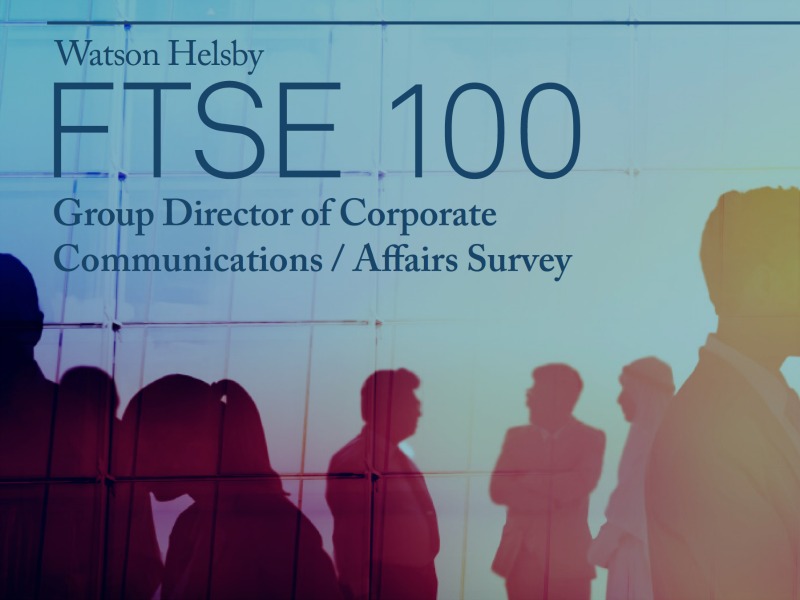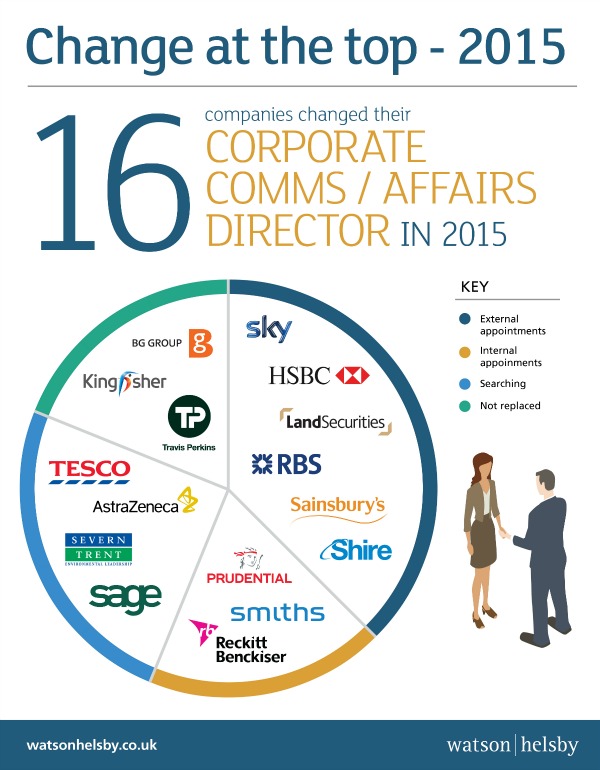Arun Sudhaman 22 Apr 2016 // 1:38PM GMT

One of the key findings from the inaugural Global Communications Report concerned the disparity between agency and in-house growth forecasts. Agencies were fairly bullish, expecting the industry to reach $20bn by 2020.
By comparies, senior in-house communications executives predicted just 13% growth in their budgets over the next five years, which averages out at only 2.5% per year. Clearly, that is a pressing concern for the PR agency industry, and helps explain why so many firms see marketing budgets as a more attractive source of growth.
Reinforcing these findings is new research from the UK, where Watson Helsby has again surveyed communications directors at FTSE 100 companies. Only 13% reported an increase in expenditure, compared to 37% that cut budgets. Half saw no change.
There is better news elsewhere in the report. 80% of FTSE 100 companies now have a corporate affairs or communications director, compared to 77% one year ago. The 20% that don't tend to be either lower-profile B2B players, where communications sits within investor relations, or companies that are "actively avoiding publicity."
In addition, 47% are formal members of executive committee, up from 43% in 2014. The study finds that a number of corporate communications directors were not formal members but attended the Exco majority of meetings, if not all. "This can be
a source of frustration since they do not receive the compensation that is awarded to a
formal member of the ExCo, yet believe their contribution and responsibilities are on the
same level."
There is also plenty of insight into the role's expanding remit, which was recently highlighted by Arthur W Page Society's 'New CCO' research. Normal components now include media relations, corporate and internal communications, corporate brand, public affairs, digital/social media, CSR and crisis comms.
But there is less evidence of corporate communications departments merging with marketing; only 3% of FTSE 100 corporate communications directors report into marketing, with the CEO (76%) remaining the most popular reporting line.
In terms of their background, a clear majority (70%) come from communications an PR (including journalism). 10% have a public affairs background, while the remainder are drawn from IR, legal and other services. 47% are female compared to 44% last year.
The report also finds that 25% of FTSE 100s have changed their corporate communications / affairs directors over the past couple of years, including 16 in the past year alone. Of those 16, nine companies have made a new appointment, — seven have been external hires and two were internal, suggesting that succession planning – as is often the case – remains sub-optimal.
Remuneration packages can vary significantly between corporate communications / affairs
directors working for a FTSE 20 and those working for a company at the bottom end of the
FTSE 100 index. Base salaries in the FTSE 20 range from £250,000 to over £550,000. Those at the upper end of the scale are members of the executive committee. In the FTSE 40-60 salaries range from £160,000 to £275,000. In the FTSE 70-100 salaries range from
£100,000 to £250,000. There is therefore a very clear correlation, with certain exceptions, between market cap and salary.

By comparies, senior in-house communications executives predicted just 13% growth in their budgets over the next five years, which averages out at only 2.5% per year. Clearly, that is a pressing concern for the PR agency industry, and helps explain why so many firms see marketing budgets as a more attractive source of growth.
Reinforcing these findings is new research from the UK, where Watson Helsby has again surveyed communications directors at FTSE 100 companies. Only 13% reported an increase in expenditure, compared to 37% that cut budgets. Half saw no change.
There is better news elsewhere in the report. 80% of FTSE 100 companies now have a corporate affairs or communications director, compared to 77% one year ago. The 20% that don't tend to be either lower-profile B2B players, where communications sits within investor relations, or companies that are "actively avoiding publicity."
In addition, 47% are formal members of executive committee, up from 43% in 2014. The study finds that a number of corporate communications directors were not formal members but attended the Exco majority of meetings, if not all. "This can be
a source of frustration since they do not receive the compensation that is awarded to a
formal member of the ExCo, yet believe their contribution and responsibilities are on the
same level."
There is also plenty of insight into the role's expanding remit, which was recently highlighted by Arthur W Page Society's 'New CCO' research. Normal components now include media relations, corporate and internal communications, corporate brand, public affairs, digital/social media, CSR and crisis comms.
But there is less evidence of corporate communications departments merging with marketing; only 3% of FTSE 100 corporate communications directors report into marketing, with the CEO (76%) remaining the most popular reporting line.
In terms of their background, a clear majority (70%) come from communications an PR (including journalism). 10% have a public affairs background, while the remainder are drawn from IR, legal and other services. 47% are female compared to 44% last year.
The report also finds that 25% of FTSE 100s have changed their corporate communications / affairs directors over the past couple of years, including 16 in the past year alone. Of those 16, nine companies have made a new appointment, — seven have been external hires and two were internal, suggesting that succession planning – as is often the case – remains sub-optimal.
Remuneration packages can vary significantly between corporate communications / affairs
directors working for a FTSE 20 and those working for a company at the bottom end of the
FTSE 100 index. Base salaries in the FTSE 20 range from £250,000 to over £550,000. Those at the upper end of the scale are members of the executive committee. In the FTSE 40-60 salaries range from £160,000 to £275,000. In the FTSE 70-100 salaries range from
£100,000 to £250,000. There is therefore a very clear correlation, with certain exceptions, between market cap and salary.



































.jpg)

















